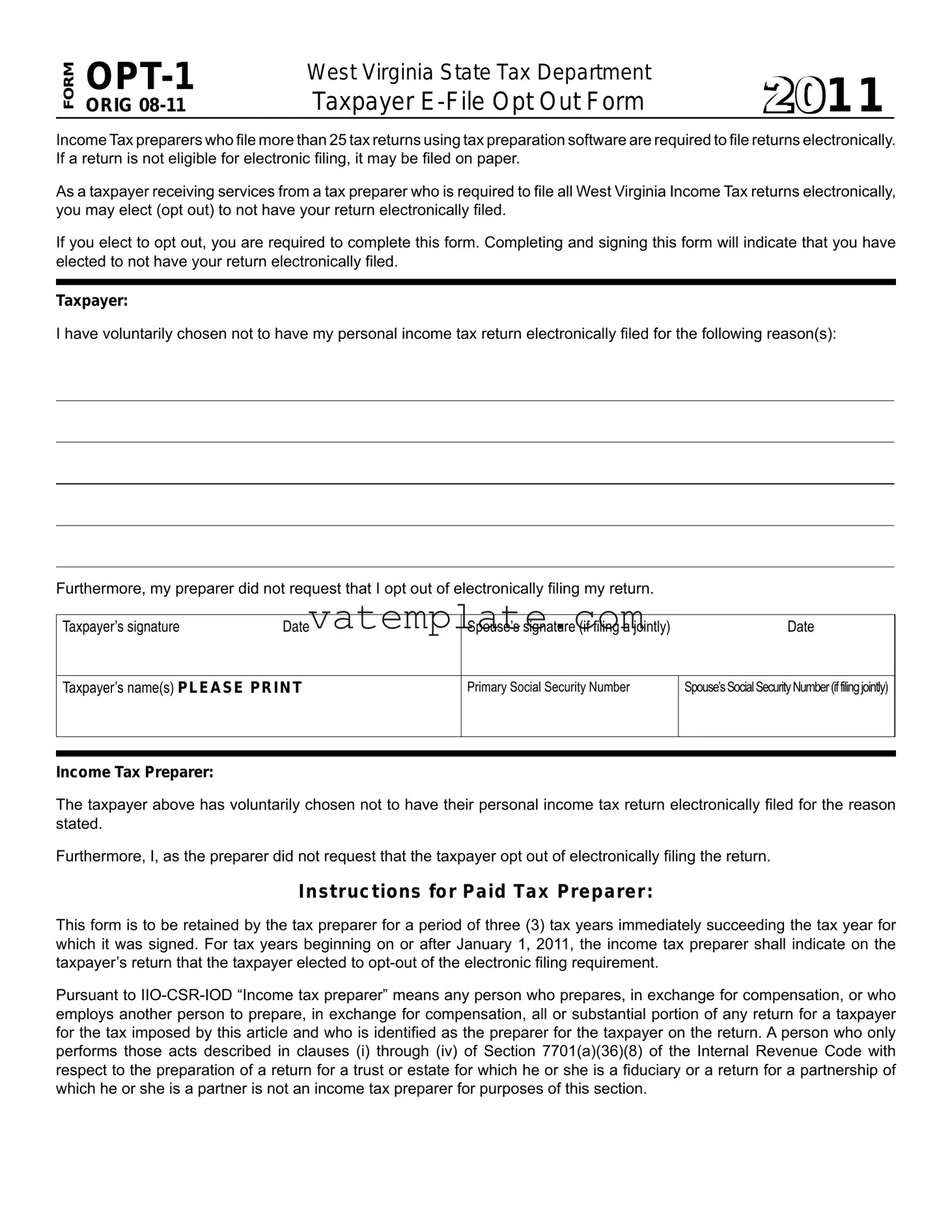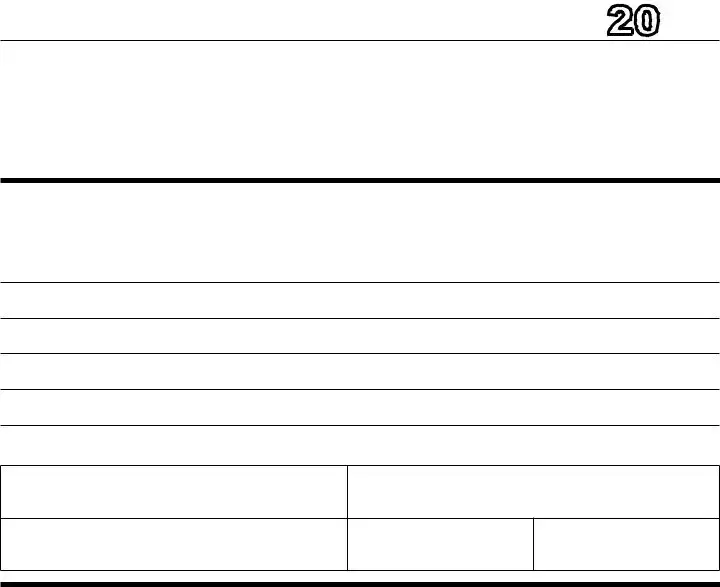West Virginia State Tax Department |
2 0 1 1 |
Taxpayer E-File Opt Out Form |
Income Tax preparers who ile more than 25 tax returns using tax preparation software are required to ile returns electronically. If a return is not eligible for electronic iling, it may be iled on paper.
As a taxpayer receiving services from a tax preparer who is required to ile all West Virginia Income Tax returns electronically, you may elect (opt out) to not have your return electronically iled.
If you elect to opt out, you are required to complete this form. Completing and signing this form will indicate that you have elected to not have your return electronically iled.
Taxpayer:
I have voluntarily chosen not to have my personal income tax return electronically iled for the following reason(s):
Furthermore, my preparer did not request that I opt out of electronically iling my return.
Taxpayer’s signature |
Date |
Spouse’s signature (if iling a jointly) |
Date |
Taxpayer’s name(s) PLEASE PRI N T
Primary Social Security Number
Spouse’s Social Security Number (if filing jointly)
Income Tax Preparer:
The taxpayer above has voluntarily chosen not to have their personal income tax return electronically iled for the reason stated.
Furthermore, I, as the preparer did not request that the taxpayer opt out of electronically iling the return.
I nst ruc t ions for Pa id Ta x Pre pa re r:
This form is to be retained by the tax preparer for a period of three (3) tax years immediately succeeding the tax year for which it was signed. For tax years beginning on or after January 1, 2011, the income tax preparer shall indicate on the taxpayer’s return that the taxpayer elected to opt-out of the electronic iling requirement.
Pursuant to IIO-CSR-IOD “Income tax preparer” means any person who prepares, in exchange for compensation, or who employs another person to prepare, in exchange for compensation, all or substantial portion of any return for a taxpayer for the tax imposed by this article and who is identiied as the preparer for the taxpayer on the return. A person who only performs those acts described in clauses (i) through (iv) of Section 7701(a)(36)(8) of the Internal Revenue Code with respect to the preparation of a return for a trust or estate for which he or she is a iduciary or a return for a partnership of which he or she is a partner is not an income tax preparer for purposes of this section.

